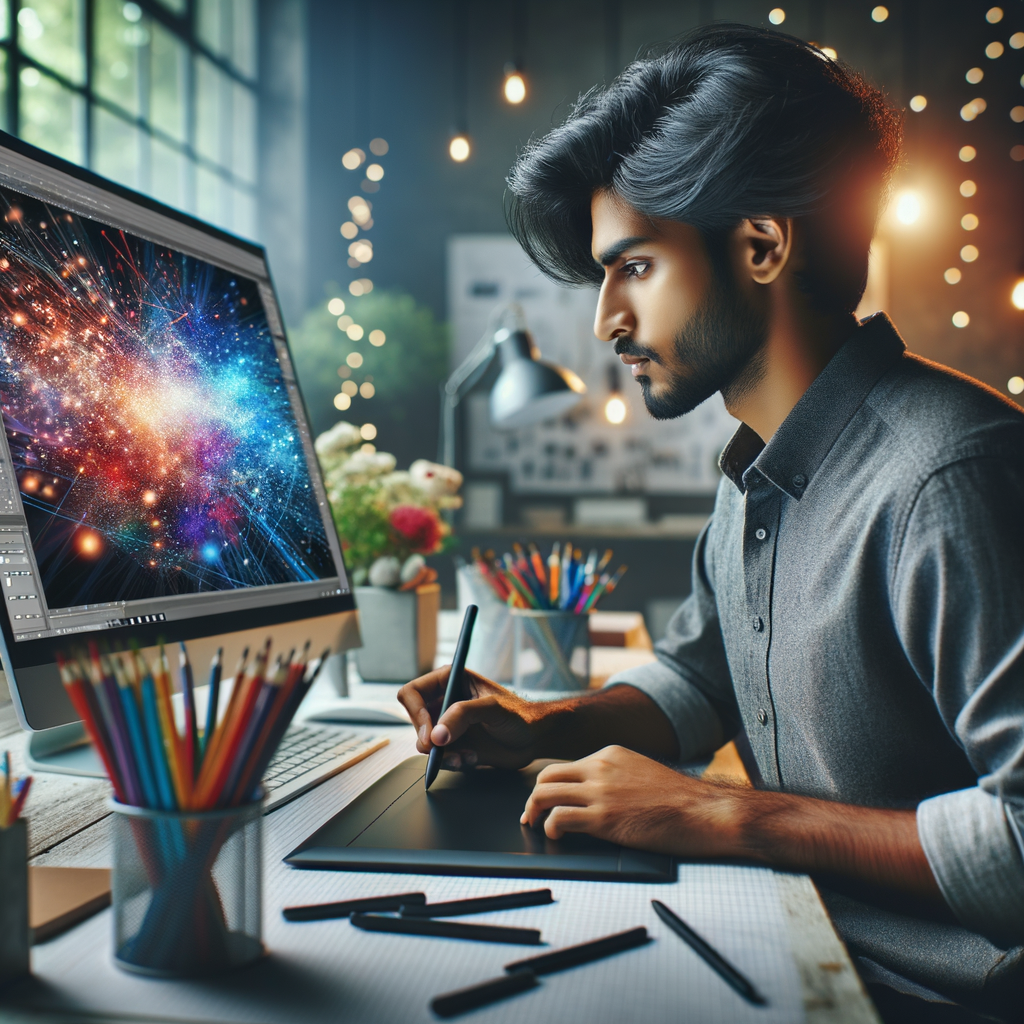
Digital art has become an essential medium for artists of all levels. Whether you're a beginner looking to explore the creative possibilities or a professional seeking to refine your skills, understanding the right tools and techniques can significantly impact your work. In this article, we will delve into the essential equipment, software options, and practical tips that can help you succeed in your digital art journey. Join us as we explore how to choose the right graphic tablet, software comparisons, effective painting techniques, color theory, and strategies to build a captivating portfolio that attracts clients.
As the world of art continues to evolve, more artists are turning towards digital platforms. The accessibility and convenience of digital art creation have made it an appealing choice for both novices and seasoned professionals. However, navigating through the myriad of tools and technologies can be daunting. This guide aims to demystify the essential tools and techniques for aspiring digital artists.
Choosing the Right Graphic Tablet
When it comes to digital art, having the right graphic tablet is crucial. Several factors should be considered when selecting a tablet that suits your needs:
- Size: Consider the workspace you have available. Smaller tablets are portable and easy to store, while larger ones offer more space for drawing.
- Pressure Sensitivity: A tablet with higher pressure sensitivity allows for more nuanced brush strokes, making it ideal for detailed work.
- Screen Type: Decide whether you prefer a traditional tablet with a stylus or a display tablet that allows you to draw directly on the screen.
Popular choices among digital artists include Wacom Intuos, Huion tablets, and XP-PEN models. Each has its benefits, so it's essential to read reviews and, if possible, try them out before making a purchase.
Software Comparisons: Finding the Right Fit
The software you choose for digital painting can significantly influence your workflow and creativity. Here are some of the most popular options:
- Adobe Photoshop: A staple in the industry, Photoshop offers a range of tools for digital painting, photo editing, and graphics design. Its robust features come with a steep learning curve.
- Procreate: Exclusively available on iPad, Procreate is known for its user-friendly interface and powerful painting capabilities, making it popular among digital illustrators.
- Krita: A free and open-source program, Krita is a fantastic choice for artists on a budget. It offers a wide variety of brushes and tools tailored specifically for concept art and illustrations.
- Clip Studio Paint: Particularly favored by comic and manga artists, this software combines both drawing tools and features for animations, making it versatile for storytellers.
Each software offers unique features, so it’s worth exploring a few options to see which one aligns with your artistic style and workflow.
Mastering Digital Painting Techniques
Once you've selected your tools, it's time to dive into the techniques that can enhance your digital artwork:
- Layers: One of the key advantages of digital art is the use of layers. Mastering layer management can drastically improve your workflow by allowing you to work on different aspects of your artwork without affecting others.
- Custom Brushes: Experimenting with and creating custom brushes can add unique textures and effects to your artwork. Many programs come with pre-made brushes, but making your own can give your work a personal touch.
- Blending Modes: Understanding how blending modes work can enhance color mixing and the overall depth of your paintings.
- Color Theory: Having a solid grasp of color theory will aid in creating harmonious compositions. Knowing how colors interact, such as complementary and analogous color schemes, is invaluable for digital artists.
To apply these techniques effectively, consider following online tutorials or taking courses that focus specifically on digital painting methods.
Building Your Portfolio: Attracting Clients
Your portfolio is often the first impression potential clients will have of your work. Here are some tips to ensure your portfolio stands out:
- Diversity: Showcase a range of styles and subjects to demonstrate versatility. Include personal projects alongside client work to give potential clients a sense of your artistic identity.
- High-Quality Images: Ensure that all images are high resolution and properly lit. Proper presentation can make a significant difference in how your work is perceived.
- Regular Updates: Keep your portfolio fresh by regularly adding new work. This not only showcases your growth but also indicates to clients that you are active in your field.
Consider using platforms like Behance, ArtStation, or your own website to host your portfolio, making it easily accessible to potential clients.
Networking and Finding Opportunities
In the digital art community, networking plays a crucial role in securing jobs and collaborations. Leverage social media platforms like Instagram and Twitter to showcase your work and connect with other artists:
- Join Online Communities: Engage in art forums, social media groups, or Discord servers where you can share your work, receive feedback, and connect with fellow creatives.
- Participate in Challenges: Many artists participate in monthly challenges or themed art prompts. This not only encourages practice but also helps you gain visibility.
- Collaborate: Partnering with other artists for projects can expand your audience and introduce you to new styles and techniques.
As you grow, maintain relationships with fellow artists and clients, as these connections can lead to new opportunities and commissions.
Final Thoughts
Becoming a successful digital artist takes time, practice, and the right tools. By choosing the appropriate graphic tablet and software, mastering essential techniques, and building a compelling portfolio, you’ll be setting yourself up for a rewarding career in digital art. Remember that creativity is not just about the tools but also about your unique vision and dedication to your craft. Keep pushing boundaries, seek inspiration from various sources, and never stop learning. Your journey as a digital artist is just beginning, and the possibilities are endless!

